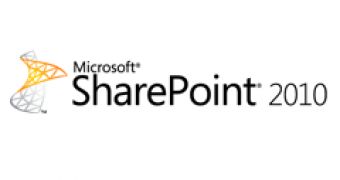SharePoint 2010 customers can now take advantage of Service Pack 1 and fresh guidance, both offered free of charge, in order to benefit from a drastic boost of the supported data size limits for SharePoint content databases. IT professionals dealing with SharePoint 2010 had to previously make sure that the content database limit was under 200 GB for collaboration and less than 1TB for document archive.
The limitations mentioned above now mean nothing to SharePoint administrators, provided that they leverage the new guidance from Microsoft. SharePoint SP1, although a recommended upgrade, doesn’t seem to be as critical to the data storage changes as the extra documentation and guidelines published by the software giant earlier this week.
IT pros should make their way to where else but on TechNet, where the “SharePoint Server 2010 capacity management: Software boundaries and limits” article went live on July 8th.
If all special requirements are ignored, the SharePoint content database limit is still 200 GB, but with a bit of extra work, the technology can now support up to 4TB of data in all usage scenarios, the Redmond company explained. Furthermore, admins can forget about any sort of size limit for document archive scenarios.
According to Microsoft: “for a SharePoint content database up to 4 TB you need to additionally plan for the following two requirements:
◦ Requires disk sub-system performance of 0.25 IOPS per GB, 2 IOPS per GB is recommended for optimal performance.
◦ Requires the customer to have plans for high availability, disaster recovery, future capacity, and performance testing.
- For a SharePoint content database over 4TB specifically for a Document Archive scenario you are required to additionally plan for the following:
◦SharePoint sites must be based on Document Center or Records Center site templates and must be an archive scenario where less than 5% of content is actively read from each month and less than 1% of content is actively written to.
◦Do not use alerts, workflows, link fix-ups, or item level security on any SharePoint objects in the content database.”
In addition to the modifications described above, SharePoint content databases can now be expended to contain as much as 60 million items per DB, and Microsoft has also scrapped the specific 5 TB limit per SQL Server instance.
It’s clear that by raising storage barriers for the product, Microsoft is effectively given green light to the creation of much larger SharePoint farms than it was possible when the technology was first introduced.
The recent new stage in evolution reached by SharePoint goes beyond content database data size limit, with the software giant stressing that customers can start using iSCSI connected NAS disks and cut down their costs.
This has been made possible through the introduction of support for the SQL Server FILESTREAM RBS provider in SharePoint.
The change makes it possible for customers to employ dedicated BLOB store for their BLOBs, since the RBS (Remote Blob Store) APIs allow them to seamlessly store and retrieve binary large object data even if it’s not in their main SQL database.
There are some advantages to using Remote Blob Store with SharePoint:
“• RBS enables SharePoint Foundation 2010 running on SQL Express to store more data than the SQL Express limit of 4 GB. In SQL Express 2008 R2 this limit was increased to 10 GB.
• Some operations can be performance optimized with average blob sizes over 1Mb.
• There could be storage optimizations with potential disk space and disk cost savings from differential backups or tiered storage.
• We have completed testing on the SQL RBS FILESTREAM provider which can enable iSCSI connected storage for RBS use. Using iSCSI allows for the use of lower cost NAS storage.
• Other potential data optimizations may be developed by ISV’s using the supported public RBS APIs and SharePoint APIs.”

 14 DAY TRIAL //
14 DAY TRIAL //